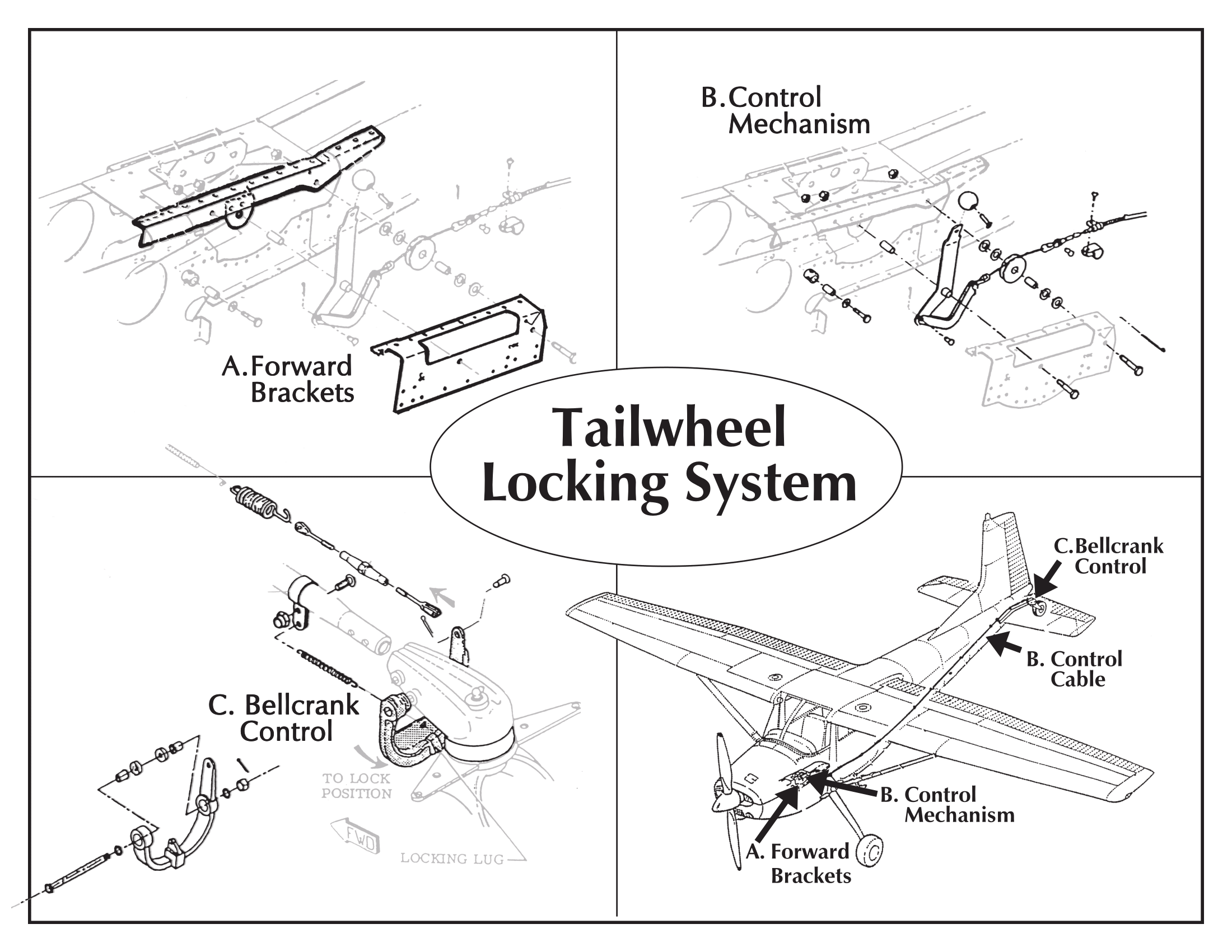Tailwheel Lock Information
Slide It In
A brief review of aviation history shows that all the early taildraggers simply had no tailwheel. A skid did the job. It was adequate for the grass or pasture runways common to the early aviators. Later, the need for better control led to the development of small, strong, lightweight castoring-type tailwheels.
As the number and size of aircraft increased, standard size tailwheel assemblies began pressing the limit of strength and reliability. Aviation growth and the need for better products brought oversize tailwheels.
Now, these rugged units have proven to smooth up operations on the rough or soft runways. The bigger wheels will not sink into soft ground as the smaller tailwheels do. Blowouts are reduced in hot dusty climates. Less power is needed for taxi, which saves props; rock dings are eliminated; and there are many more benefits.
Tailwheel Set-up
Cessna aircraft use Scott and McCauley on their OEM aircraft. These tailwheels are new and snug when they leave the factory. Checking them periodically to see that they remain snug will ensure years of good operation.
These tailwheel assemblies are set up with a shimmy dampener built in. The use of vertical springs pressing on the flat washers within the tailwheel is a common method. These springs work best with the standard 8″ tire as used on the 170, 180, and 185. The larger tailwheels are not dampened as well with the springs, and therefore a greater pre-load is used on the bearings to obtain the same results.
When the aircraft is flying and the tailwheel is un-locked, the tailwheel should not move more than 5-10 degrees right and left. If it does, an adjustment needs to be made. This can also be checked from the cockpit rudder, with the rear of the aircraft jacked.
With the development of the bigger, rugged tailwheels, it is no wonder that a new problem appeared – wheel shimmy. This has become an increasing nuisance. Some manufacturers built in a shimmy dampener system. This has worked fairly well, but the best way of all to stop tailwheel shimmy is to include a tailwheel lock system. This will stop shimmy altogether.
Without the use of tailwheel locks, the pilots technique may be the best way of preventing shimmy, as it usually follows the three point cross-wind landing attempt on a hard surface runway.
Takeoff and Landing
With Lock
When the tailwheel lock system is installed and used properly, tailwheel shimmy is eliminated. Questions asked quite often are why, how and when to use it. This is where my experience with the DC-3 and Beech 18 comes in. On those aircraft, the big 600×6 and 500×5 tailwheels have no shimmy dampening system, are non-steerable, and are full swiveling. They have so much mass that the tailwheels just have to stay locked. In any locking system as in the DC-3, the lesson is as follows. Takeoff and landing, crosswind or not, taxi into position, lock the wheel and move the plane ahead slowly. Move the rudder pedals right then left slightly to engage the lock. Make a normal takeoff. DO NOT TOUCH THE LOCK AGAIN until slow and in control after the landing roll. About 50 feet before turning off the runway unlock the tailwheel. Wiggle the tail to disengage any side loading due to crosswind, etc. and turn off the runway.
Taxi in crosswinds? The taxi with the lock will save brakes. There is no way to taxi in a straight line with no lock in a brisk wind. CAUTION: Do not force the steering with the tailwheel locked; the force of extra arm will damage the lock mechanism. With normal control, you will have some steering with the tailwheel locked.
Without Lock
Sometimes is just isn’t practical to use a tailwheel lock; or the aircraft you are flying does not have one. Adjusting your technique can eliminate shimmy when landing in a cross-wind or on a hard surface runway. Use the crab method on the approach and short final. Roll the upwind wheel on. Do not let the tailwheel touch the ground in that crosswind, cross control configuration. At the instant before the wheel touches, neutralize the rudder. You will already be moving the rudder rapidly left and right to keep the plane straight. Yolk back, upwind wing down, make a normal roll out. For wheel landings, use the crab method on the approach and short final. Roll the upwind wheel on, get on the mains, slow, let the tail end come down with brakes on, rudder in neutral. With that upwind wing down, slow it down to a safe taxi speed. These tips will reduce the shimmy tendency.





